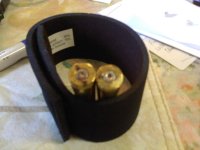The proper and correct military terminology is Rifle, M1, and Carbine, M1 (or M2, M3), and all the FM's, TM's, TOE's, training documents, etc. call the former the Rifle, M1 or the M1 Rifle. None refer to it as the Garand. Soldiers commonly called it the "M1" with "rifle" assumed; the M1 carbine was simply "the carbine". But some folks insist that all soldiers, all the time, always called it the "Garand" and never called it the "M1". I am sure a few soldiers did call it the "Garand", but that name was very uncommon. I note that those folks who hold out for "Garand" never served in the Army when the M1 rifle was in use, but have gained their expertise in other ways.
Jim
Jim













